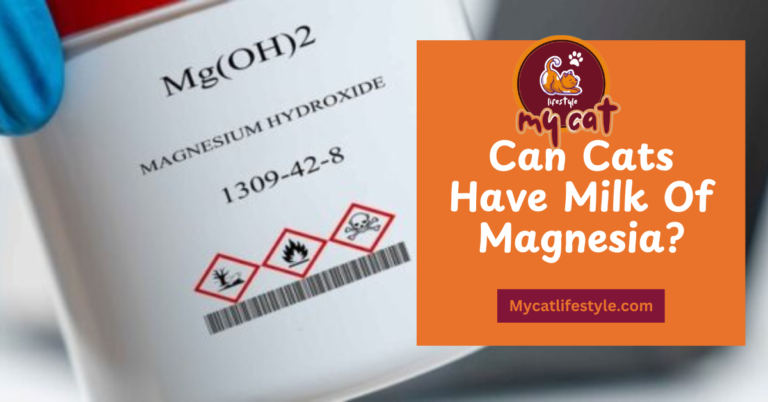Can Cats Eat Raw Meat? A Comprehensive Guide for Pet Owners

I’ve been dedicated to cat rescue since 1992, welcoming myriad cats into my care over the decades. My experience spans a spectrum of cat food options, from budget-friendly choices to premium, costly brands. The question of feeding cats raw meat has often crossed my mind, but until recently, I hesitated to delve into the topic.
Historically, I’ve steered clear of offering my feline friends human food, adhering strictly to commercially prepared cat diets. Drawing parallels between humans and cats, I’ve long held the belief that raw meat might not be suitable for our domesticated companions, just as it generally isn’t for us. However, considering the natural behavior of cats in the wild—who certainly don’t cook their prey—it’s worth exploring this issue further.
Let’s dive into expert opinions and discover what’s best for our furry companions together.

Can Cats Eat Raw Meat?
Cats are naturally equipped to handle and digest raw meat, reaping the nutritional benefits akin to those they would get from a cooked diet. In fact, the freezing process might even enhance their ability to extract nutrients more efficiently.
When contemplating a raw diet for your cat, the key consideration is the type of meat you choose. While there’s a slight risk of foodborne illness or parasites with any kind of meat, sourcing from reputable suppliers or opting for well-trusted brands can mitigate these risks significantly.
Certain meats are ideal for a raw diet, offering substantial benefits, while others pose greater risks and are best avoided.
What is a raw food diet for cats?
Raw cat food typically comprises a diet that includes raw meat, and may also feature raw offal and bone, alongside other uncooked components like vegetables. This type of diet is available both as homemade and commercial preparations, with the latter categorized into complete and complementary types.
A complete raw diet provides all the essential nutrients your cat needs and can be the sole source of nutrition. On the other hand, a complementary raw diet must be paired with other foods as advised by the manufacturer to ensure a balanced diet. It’s generally advised that homemade raw diets be approached with caution, as they can vary significantly in nutritional consistency and adequacy. Such diets should only be pursued under expert advice and may require additional supplements to prevent nutritional deficiencies.
While there are both touted benefits and potential downsides to feeding cats a raw diet, the ongoing debate centers around whether raw meat is the best choice for feline nutrition. Here’s what you should know about raw cat food.
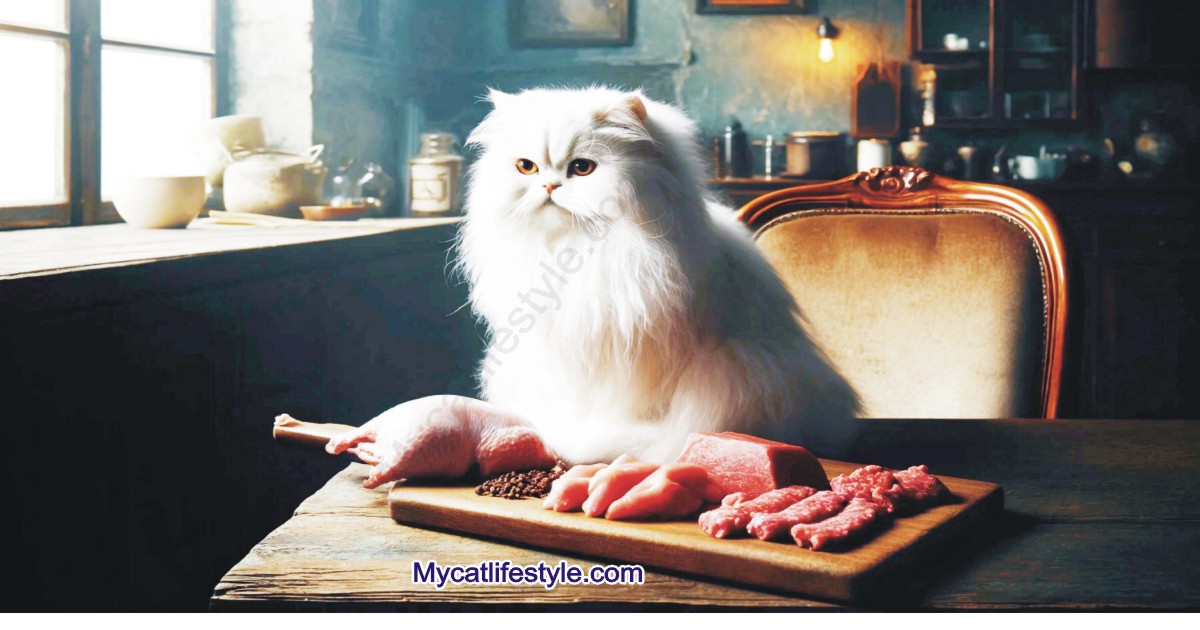
What Raw Foods Are Suitable for My Cat?
The discussion about feeding raw meat and other raw foods to cats continues to stir debate, with each choice having its potential drawbacks and benefits.
*It’s crucial to consult your vet first, though opinions may vary among professionals.
While the raw foods listed below are generally safe for your cat, they should only complement a well-balanced diet that fulfills all their nutritional needs. Human food lacks certain nutrients, which could lead to nutritional deficiencies in your cat.
Here are some potential negatives of a daily raw food diet for your cat:
It’s also worth noting that domestic cats often live longer than their wild counterparts, likely due to the more nutritious foods they are fed that contain essential nutrients needed for health. In contrast, wild cats must fend for themselves, lacking the dietary benefits of household pets.
Cats are increasingly adapting to domestication, moving away from their instinctual hunting behaviors. Consequently, many pet food brands now offer healthier options, including grain-free, high-protein, and low-carbohydrate canned and raw diets.
Increasingly, companies are producing dry and moist foods with meat or fish as the primary ingredient, complemented by:
- A variety of fresh fruits and vegetables
- No soy or soy derivatives
- No additives
- No dyes
- No preservatives
- No grains, including rice
These foods are generally safe for your cat and can even replace traditional cat treats. I advocate for these healthier alternatives over standard commercial treats. When introducing new foods to your cat’s diet, do so gradually. Always wash fruits thoroughly and remove any seeds, rinds, pits, or skins that are inedible.
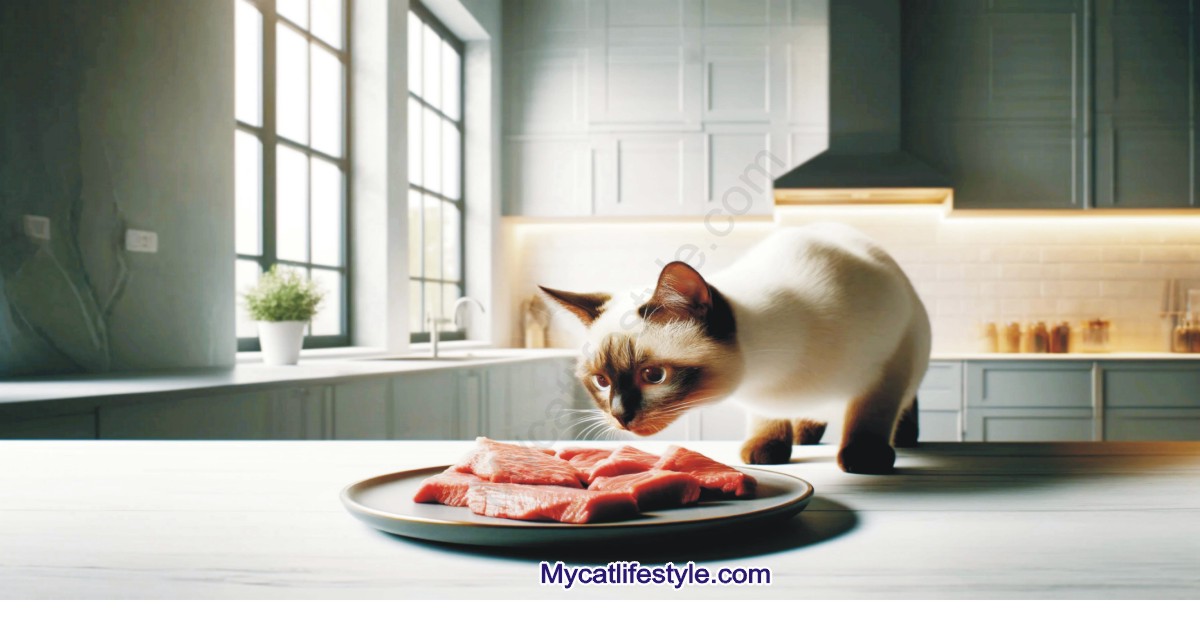
Safe Fruits:
Cat health experts recommend the following fruits and vegetables as safe and beneficial when given in small quantities:
- Apples
- Mangoes
- Cantaloupe
- Apricots
- Bananas
- Blueberries
- Pears
- Pineapple
- Oranges
- Cranberries
- Strawberries
- Raspberries
- Watermelon
Fruits to Avoid (Toxic to Cats)
- Cherries
- Grapes
- Raisins
- Lemons
- Grapefruits
- Persimmons
Safe Vegetables (Best steamed or boiled for digestibility)
- Asparagus
- Various peppers (green, red, orange, yellow)
- Broccoli
- Brussels Sprouts
- Cabbage
- Carrots
- Cauliflower
- Celery
- Cucumber (seedless)
- Lettuce
- Peas
- Pumpkin
- Spinach
- Zucchini
Vegetables to Avoid (Toxic to Cats)
- Avocado
- Onions and onion powder
- Garlic and garlic powder
- Rhubarb
- Wild mushrooms
- Corn
Small, pea-sized pieces of these safe fruits and vegetables can serve as low-calorie snacks. However, be mindful of the high sugar content in some fruits, and keep treats like bananas, pineapples, and strawberries to a minimum.
*Consulting with a vet is advisable before introducing any human food to your cat’s diet, especially if your cat has existing health issues.

How to Feed Your Cat These Fruits and Vegetables
When adding new fruits and vegetables to your cat’s diet, it’s important to introduce them gradually, one at a time, over several days. This approach helps to monitor for any allergic reactions or adverse effects. Common food allergens for cats include beef, corn, dairy, and fish.
Signs of Allergic Reactions to Foods in Cats:
- Vomiting
- Skin irritation
- Diarrhea
Do Cats Prefer Raw or Cooked Meat?
Cats have a more acidic digestive system than humans, which enables them to better digest and tolerate raw foods. However, cats with immune diseases may require special dietary considerations, so it’s crucial to consult with your veterinarian first.
As natural carnivores, cats generally prefer raw meat, although they can also consume cooked meat. It’s essential to avoid feeding fish to your cat on a daily basis and ensure that their diet is high in protein, which is vital for maintaining a strong heart, sharp vision, and a healthy reproductive system.
How to Serve Meat to Your Cat
Cats’ digestive systems are well-suited to handle raw meat. When preparing raw meat for your cat, keep it plain and simple without any added salt or seasonings. Always avoid giving your cat spoiled or expired meats. While cats naturally favor raw meat, they can also adapt to cooked meats over time if introduced properly.
High Protein Cooked Meat Options:
- Beef
- Chicken
- Turkey (Note: It’s often recommended to avoid feeding turkey to cats, so further research is advised.)
- Lean deli meats
These guidelines will help ensure your cat enjoys a safe and nutritionally balanced diet that includes both raw and cooked options tailored to their needs.
Can Cats Eat Cold Raw Meat?
Cats typically avoid cold food right out of the refrigerator, preferring their meals at room temperature. This preference holds especially true for raw meat, which should be served at a more palatable temperature to accommodate a cat’s natural inclinations
Feeding your cat raw chicken presents some safety concerns as it does for humans. However, consider that a cat in the wild that captures a chicken would consume it raw.
Can Cats Eat Raw Meat Daily?
Based on current trends, many cat owners are opting for a raw food diet, which supports daily consumption of raw meat as part of a nutritionally complete diet.
While commercial dry or wet food is adequate, adding fresh, cooked, or raw meat daily enhances the diet. However, feeding fresh fish daily is not recommended due to potential health risks; a small amount of water-packed tuna a couple of times a week is enough.
Understanding and reading cat food labels is crucial. Even lower-cost cat food can be sufficient, but a diet rich in high-quality ingredients may promote better health and reduce veterinary visits. Ensure meat is the primary ingredient if supplementing your cat’s diet with fresh, cooked, or raw meat daily.
1.Raw Bacon
Bacon is not toxic to cats, and some may even enjoy it. However, bacon is not a healthy choice due to its high sodium and fat content. It’s okay to give a small piece as a rare treat, but ensure the bacon is fresh and uncured.
2.Raw Fish
It’s generally advised not to feed raw fish to your cat because of the potential for bacterial contamination, which could lead to food poisoning. Instead, consider purchasing a commercial diet specifically formulated with raw fish for cats.
3.Raw Beef
Like all raw meats, raw beef poses a risk of food poisoning. If you choose to feed raw beef, it should be fresh, unseasoned, and only offered in very small amounts on occasion, as advised by cat health experts.
4.Raw Pork
Although cats are physically capable of eating raw pork, doing so carries a significant risk of disease and parasites, similar to the risks it poses to humans. Given the potential health dangers, it may be wise to avoid feeding raw pork to your cat altogether. There are many other safer options available that do not add unnecessary risks to your pet’s health.
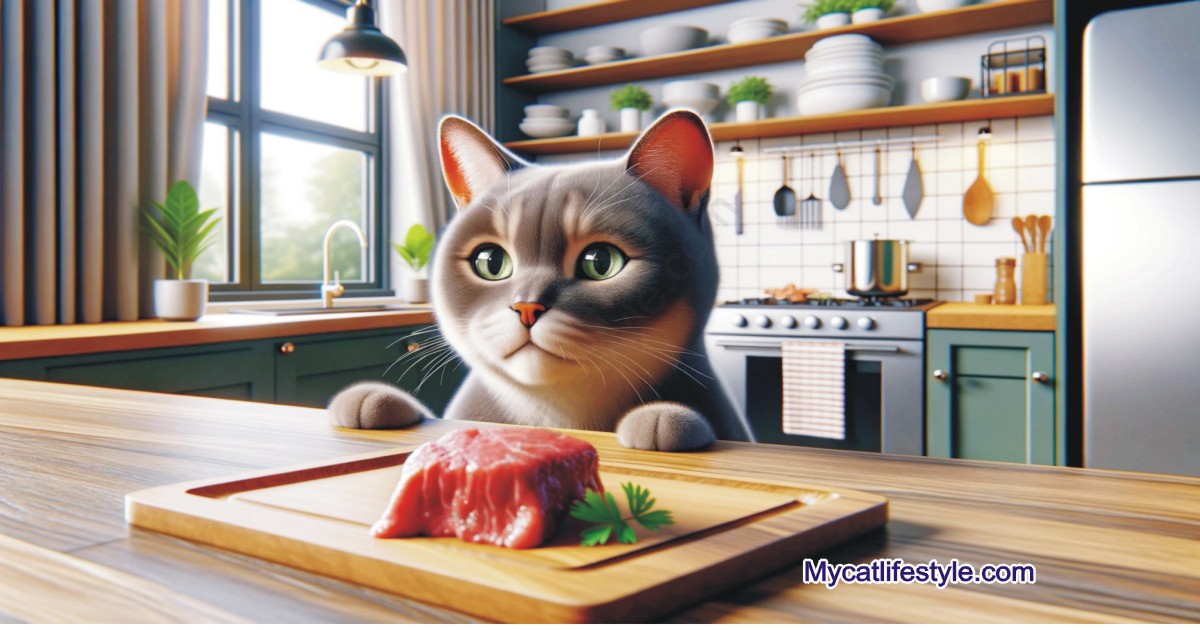
How do I get my cat started on a raw diet?
Because cats develop strong dietary preferences early, introducing them to a raw food diet during kittenhood can be most effective. Cats are particularly sensitive to changes, so it’s important to transition them to a raw diet gradually.
For the initial three days, start by mixing 25% raw food with 75% of their current diet. This mix helps them adjust to the new texture and flavor. Then, every two to three days, increase the raw food portion by 25%. Continue this pattern until you can fully transition to a raw diet, which your cat should be accustomed to by the end of the process.
What age can cats eat raw meat?
You can start feeding your cat raw meat even when it’s a kitten. However, do start getting it into a raw diet only after it turns 20 weeks of age, as their immune system is still developing before that.
More Dos and Don’ts of the Feline Diet
If you’re unsure about the compatibility of cats and raw meat or other dietary hazards, remember that our feline friends are hard-wired carnivores, and certain foods can harm them. Here’s a rundown of foods to avoid:
1.Milk
Most cats are lactose intolerant, so it’s best to avoid giving them dairy products like milk, cream, and cheese. Occasionally, a small amount of yogurt or lactose-free milk is fine, but these should be given sparingly.
2.Raw Bones
These are a choking hazard. As cats chew on brittle bones, tiny shards can break off and lodge in their throats or, even if swallowed whole, can cause internal damage.
3.Alliums
Onions, garlic, chives, and shallots can lead to kidney disease in cats as they damage red blood cells, causing anemia and other chronic conditions.
4.Grapes and Raisins
These fruits are toxic to cats and can adversely affect kidney function. Symptoms such as vomiting, diarrhea, abdominal pain, and decreased urination may occur within 12 hours after ingestion.
5.Raw Dough
The yeast in raw dough can ferment in a cat’s gastrointestinal tract, potentially producing alcohol. Always clean your kitchen thoroughly after handling raw dough to prevent accidental ingestion.
6.Processed Meats
Ham, salami, bacon, and other processed meats are high in sodium and fat, which can upset your cat’s stomach and lead to long-term health issues such as heart disease, hypertension, and severe dehydration.
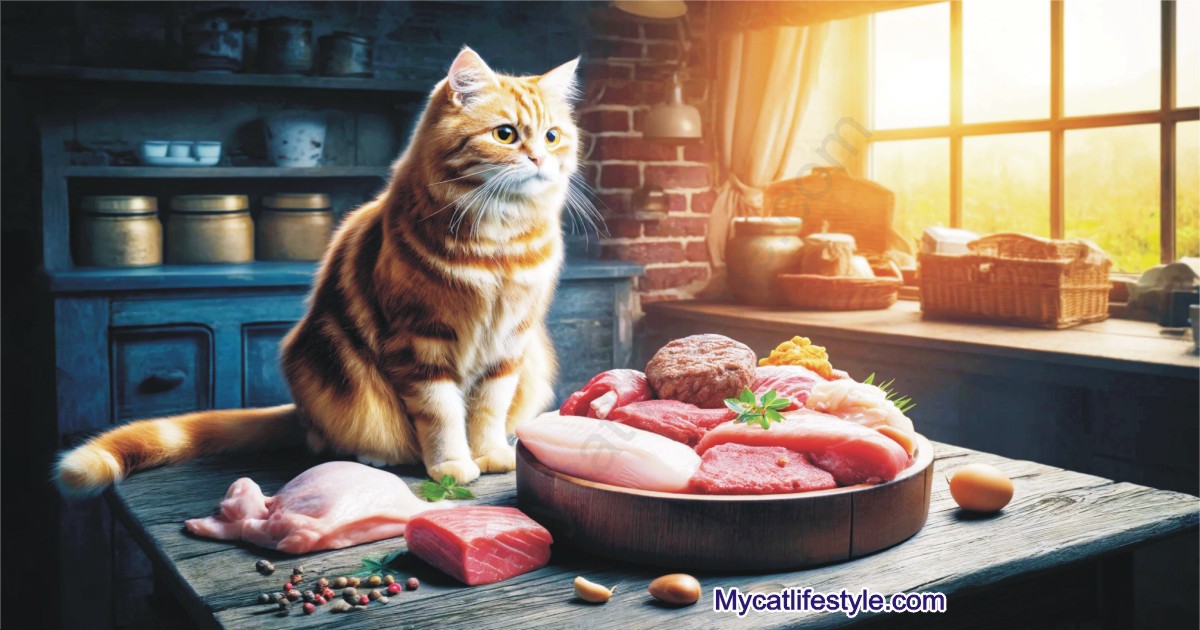
What to Do When Your Cat Has the Munchies?
If milk and bones are off-limits, what can you offer? Treats should constitute no more than 3% of a cat’s diet. Opt for substantial, nutritious options. High-fiber veggies and fruits like strawberries, watermelon, bananas, pumpkin, and apples can be good choices, helping to promote regular bowel movements, but they should be given only occasionally.
Choose snacks high in animal protein for the ultimate treat, which is crucial for your cat’s health. Here are some of the healthiest and tastiest meat snacks for your little carnivore:
- Turkey
- Chicken
- Liver
- Scallops
- Mussels
- Clams
- Carp
- Salmon
- Cod
- Tuna
- Prawns
These options satisfy a cat’s natural cravings and are packed with essential nutrients to support their health and vitality.
Frequently Askng Questions
Can a cat eat raw chicken?
Yes, cats can eat raw chicken, but it must be fresh and properly handled to avoid the risk of bacterial infections such as salmonella. Always consult your vet before introducing raw chicken to your cat’s diet.
Can I give beef to my cat?
Beef is generally safe for cats and can be a good source of protein. Whether cooked or raw, ensure it is lean and free from seasonings or additives. Introduce it gradually and under veterinary guidance if you’re considering raw beef.
Can humans eat raw cat food?
Humans shouldn’t eat raw cat food. It is specifically formulated for the dietary needs of cats and may contain bacteria that are harmful to humans.
Why can wild cats eat raw meat?
Wild cats have digestive systems naturally designed to handle raw meat, including bacteria. They also have shorter gastrointestinal tracts than humans, allowing food to pass through more quickly and reducing the risk of foodborne illnesses.
Can cats eat raw meat every day?
While cats can eat raw meat, it should be part of a balanced diet that includes all the necessary nutrients. If considering a daily raw meat diet, it is essential to consult with a vet to ensure that the diet is nutritionally complete and safe for your cat.
Final Thoughts
The popularity of raw food diets for pet cats is rising, with raw beef often highlighted as a viable option when it is sourced and prepared correctly. However, while the potential benefits of such diets are still under investigation, the risks associated with raw feeding are fairly well-documented. Therefore, introducing raw meats into a cat’s diet—whether as occasional treats or as part of a broader dietary transition—should be undertaken with caution. It is crucial to seek veterinary guidance and approval before implementing any changes to ensure the health and safety of your feline companion.

